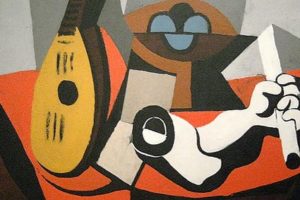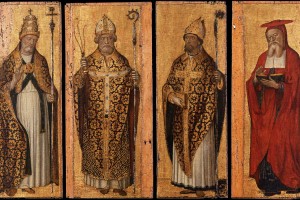The first thing you’ll probably wonder before reading the rest of this post is: what’s meta-ethics? For many philosophers, it is a topic that is debated by some of the brightest minds about whether rightness and wrongness are worth exploring. In layman’s terms, it’s the simple question, “does ethics exist?”.
The last two posts I had talked about were rather straight-forward, giving you an idea what it’s like to integrate art with philosophy and a biblical worldview. But this time, I want to ask the artist, “Does ethics exist in art?”
Nicholas Wolterstorff, a philosopher I’ve referenced in my previous posts, would argue that art is ethical insofar that it encourages action that is ethics-driven. When someone looks at the Mona Lisa, for example, do we find any ethics to discuss in that particular piece?
Doubt it… but wait! What leads us to believe this famous piece by Da Vinci is a work of art? Must we not have a standard of beauty to determine that? If so, do we apply beauty to more than just art? Does it permeate other aspects, such as finding beauty in social harmony (like being in community or a relationship) and ugliness in mankind’s lapse of judgment (such as the holocaust)?
To Wolterstorff, art is a mechanism by which we are moved to act with ethical desires. Because, in the end, we have been given a standard.
But some people, particularly many artists themselves, would like to distance themselves from ethics. John Cage, the famous postmodern musician, for instance, argued in his art, that not only was morality and ethics absent from art, but that it futile to try make sense of said topics in art. His performance pieces were the result of his nihilistic stance that permeated his music throughout.
Even artistic philosophies like post-minimalism have no place, or provide no room for, to set action by the human reaction, and to make it an ethical matter. It negates those possibilities.
While there are good examples that would suggest the existence of morals in art is nil, I think it’s beyond anyone’s imagination to try to wrap our heads around an idea that says art holds no moral significance. As many would attest to, the only way art is created, and perceived/experienced, is by way of the human element. Morality, like art, is something that is unique to human existence, and thus, I would assert (at least for now), that this human element intertwines many things, and art and morality are just two things I would say are important facets in the landscape of mankind.
So the next time you visit an art museum or gallery, I would challenge you think about these ideas: what made you look at this work, what do you think of the work, what made you think those things about the work, and why it matters.
What say you?





Leave a Reply
Your email is safe with us.